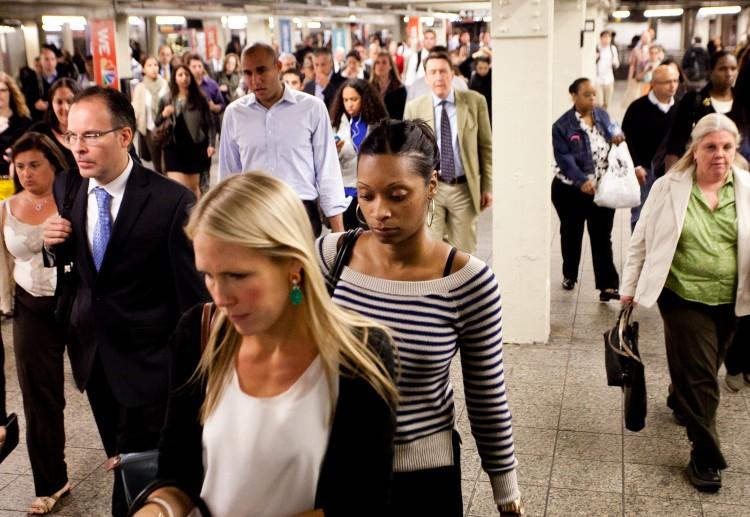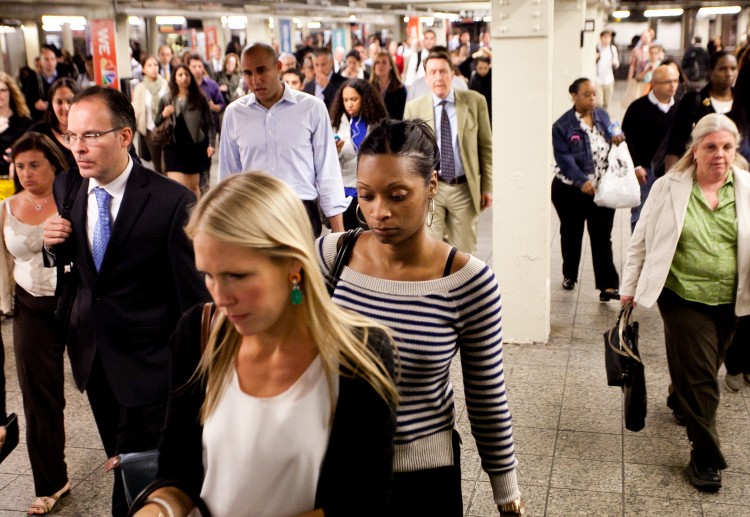NEW YORK—Nearly 600,000 workers in America have so-called mega-commutes—traveling at least 90 minutes and 50 miles to work every day.
Workers in the state of New York have the highest rate of long commutes, at 16.2 percent, followed by Maryland and New Jersey. The data for 2011, shows workers in the New York City and Washington D.C. metro areas with the longest travel times among metro areas, at about 34 minutes each.
The national average for a one-way daily commute is 25.5 minutes, according to the American Community Survey, the newest version of which was released on Tuesday.
[Related: Study Shows Supercommuters on the Rise]
A growing number of workers live in one state but work in another. One in four people who work in D.C. live in another state (D.C. is considered a state for survey purposes). More than 500,000 people who work in New York don’t live in New York.
Further, more than a quarter of all workers in the nation commute to a different county from which they live, according to a previous U.S. Census Bureau report, which releases the survey.
The bureau also published an infographic that shows the number of people working at least one day a week at home rose from 9 million in 1997 to 13 million in 2010. These people work from home on Mondays or Fridays more than any other day, with Thursday the least likely day to work from home.








Friends Read Free